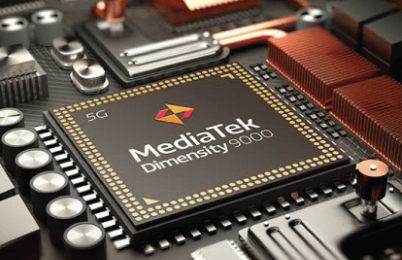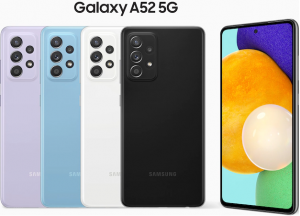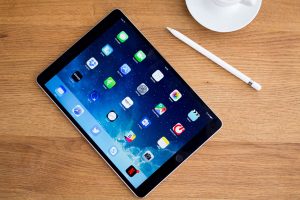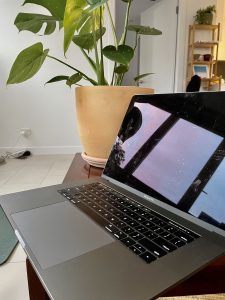Choosing the perfect mobile phone for gaming can be a little difficult for game lovers. There are many options available in the market, but you have to take a look at a few factors that you should consider before buying a gaming mobile phone. Factors such as the phone processor, how long it can keep up the game (battery life), how smooth everything looks (display refresh rate), and a few more essential details like RAM, storage, and cooling tech are necessary to consider.
In this guide, we’ll break down how to choose the best mobile phone for gaming by taking care of a few factors before buying, making it a breeze for you to pick the ultimate gaming companion in 2023 and 2024.
Factors to Consider When Buying A Gaming Phone
In order to get the best gaming performance, consider the following key factors before buying a gaming mobile phone so you make an informed decision and ensure your phone delivers a superior gaming experience.
1- Processor
The processor of any smartphone determines its performance and speed. So, it is one of the key factors to consider before buying your gaming smartphone. Although there is no specific brand of processors that is known as the ultimate best in the market but, processors like MediaTek’s Dimensity 9000 range, Qualcomm’s flagship Snapdragon 8 series and midrange processors such as the Dimensity 500 series and the Snapdragon 6 and 7 series are some high-end processor brands and are pretty good performers.
Snapdragon processors have a long-standing presence in the market as many game developers optimize their games for these chips first. But you should also acknowledge the competitive edge of MediaTek processors because they offer better performance at lower costs. This affordability allows smartphone brands to incorporate enhanced specifications, making them a compelling option in the ever-evolving smartphone industry.
Our recommendation for optimal compatibility and performance of your gaming mobile phone is to choose a device with a Snapdragon 700-series or 800-series processor. Alternatively, consider phones powered by high-end MediaTek Dimensity series chips, such as the Dimensity 1000 or Dimensity 1200.
When considering a processor, you should also briefly examine the size of the transistors. These are measured in nanometers (nm), such as 5 or 7nm. Smaller transistors enable silicon manufacturers to pack more into a chip, potentially leading to improved performance and reduced battery consumption.
2- Cooling
When you are playing games on your phone, it often gets hot. Therefore it should have an effective cooling system to prevent it from impacting its processor’s performance. This heavy workload phenomenon producing excessive heat is known as throttling, and it is something gamers aim to avoid. Phones designed for gaming often have advanced cooling mechanisms to manage and dissipate heat effectively, thanks to semiconductor improvements.
Considering this, both flagship and midrange phones can manage heavy workloads for longer durations without excessive heating. Recent mobile releases that are not exclusively marketed as gaming mobile phones have efficient cooling mechanisms. However, phones designed specifically for gaming generally provide even more effective cooling solutions.
Another thing that you should know is that gaming mobile phones having liquid cooling systems stand out as the top choice for users prioritising heat management. However, it’s worth noting that a fluid cooling system can contribute to a higher overall cost for users. For gamers who want more budget-friendly options, a vapor chamber cooling system is an excellent alternative. While it performs a similar function to liquid cooling, it remains a cost-effective solution on a slightly smaller scale.
For some of you, the overheating phone may not be a concern. Still, it’s crucial to know that when a phone overheats, its artificial intelligence (AI) restricts the processor’s output. This reduces speed, causing the phone to become slower and more prone to lag. Despite the existence of smartphone processors with excellent heat management, gaming puts a significant burden on even the most advanced Android processors. Hence, the optimal solution is to incorporate a cooling system in a gaming mobile phone.
3- Memory and Storage
Whether you believe it or not, the storage capacity of a mobile phone has a more significant impact on performance than one might realize. It’s not just about the storage size but also the type of storage that matters. You should choose faster storage in your gaming mobile phone as it translates to quicker game and application loading times.
Additionally, you should also consider the speed of the phone’s storage. You can assess it while scrolling through your gallery. If images load slowly, it indicates slower storage. However, if your phone loads images before you can scroll through them, it signals that your phone’s storage is fast. Currently, Android phones‘ most popular storage types include UFS 2.1, UFS 2.2, UFS 3.0, UFS 3.1, and UFS 4.0. Additionally, certain budget-friendly phones feature uMCP and eMMC types of storage.
About storage capacity, a minimum of 128GB of internal storage is recommended for onboard storage. While 64GB may be sufficient if you don’t engage in multiple games simultaneously, it’s worth noting that smartphone games, and modern games in general, are expanding in size with each update. The installation and setup alone can occupy as much as 1GB of storage.
Hence, maximizing storage space is essential. While 128GB is enough, choosing 256GB is advisable. Regarding RAM for gaming on a smartphone, a good starting point is 6GB. Consider going for 8GB or more for an even better gaming experience if available.
4- Display
A top-notch display gives you the best gaming experience. OLED or AMOLED is the best choice, providing increased brightness, a wide color range, true blacks, and high contrast ratios. However, the IPS LCD remains impressive. While 1080p is sufficient, phones with 1440p panels are also available for those gamers who seek enhanced clarity with more pixels.
5- User Interface and Operating System
Look carefully at the User Interface, or UI, on a mobile phone, as it can be the deciding factor in whether the smartphone is a success or a letdown for gaming. Regardless of the processor or RAM quality in a gaming mobile phone, the UI significantly influences overall performance. A good example is Infinix, which offers impressive specifications even in its most affordable mobile phones. However, the impact of its XOS user interface can bring down the overall experience significantly.
The optimisation of the UI on an Android phone can significantly influence the overall user experience and potentially interrupt gameplay for many gamers. Examples such as Xiaomi’s POCO phones becoming non-functional after certain software updates and Samsung’s budget phones featuring One UI Core, which can pose challenges for normal functioning, especially in hardcore gaming, highlight the importance of selecting a gaming phone with the right OS and UI.
6- Gaming-Optimized Hardware and Software
Sometimes the touchscreen controls of smartphones do not work while gaming. Fortunately, certain smartphone manufacturers producing dedicated gaming mobile phones have solved this issue by introducing shoulder buttons. Notable examples include the POCO F4 GT and Xiaomi’s Black Shark 4 series.
While shoulder buttons may not take the place of the experience of a dedicated controller, these thoughtful additions are a rarity and exclusive to true gaming mobile phones. Another valuable inclusion is a gaming mode, a feature on many devices. The purpose of a gaming mode on a smartphone is to enhance device performance and minimize distractions during your gaming sessions.
Shoulder buttons are typically exclusive to higher-end phones, but they serve as crucial enhancements for gaming devices. In numerous games, the presence of one or two physical buttons can prove incredibly useful. Phones from the Asus ROG series and the Black Shark series feature shoulder triggers that can be mapped to controls of your preference, elevating your gameplay to the next level. The latest Poco F5 GT has retractable shoulder buttons.
7- Battery capacity and charging speed
As you play more gaming on a smartphone, it consumes more power. Therefore, ensure that your phone has a reasonably large battery capacity. Keep in mind that factors like higher resolution, increased refresh rate, and elevated graphic settings in games can expedite battery drainage. Ensure your phone boasts a minimum battery capacity of 4,500mAh to guarantee a satisfactory battery life during extended gaming sessions.
Charging speed holds significance, but we recommend prioritising more battery capacity over faster-charging phones with smaller batteries. In games like Call of Duty Mobile and PUBG Mobile, where a single battle royale match can extend beyond 30 minutes, having a higher capacity battery proves more advantageous, ensuring prolonged gaming sessions in one stretch.
A higher battery capacity undoubtedly extends your gaming time, but it also translates to longer charging periods, a bulkier phone, and a less comfortable feel in hand. These aspects can significantly detract from your overall mobile phone experience. Additionally, there’s no need for extreme charging speeds like Realme’s 180W or Xiaomi’s 240W chargers.
While manufacturers say that their ultra-fast chargers are safe, they do come with certain drawbacks, including
- Heating issues during charging
- Gradual battery degradation over time,
- Increased smartphone usage
As a result, it is advisable to stick to a 65W charger or lower, as it generally fulfills all charging needs. A 65W charger can replenish even a 5000mAh battery in approximately half an hour. Here are the most suitable pairings of battery capacity and fast chargers for your consideration:
| Fast Charger | Battery Capacity |
|---|---|
| 80W | 5000 mAh |
| 60W, 65W | Up to 5000 mAh |
| 33W | 4500 mAh and lesser |
8- Hands-On Use
While mainstream smartphones are known for minimizing display borders, gamers have the best gaming experience with slightly larger borders. This provides ample space for holding your device horizontally, helping to prevent accidental touches. Therefore, seeking a gaming mobile phone that offers comfortable horizontal holding for extended gaming sessions is advisable. We recommend that gaining firsthand insights by exploring online reviews is essential.
9- Support for third-party accessories and 3.5mm audio
For gamers engaged in competitive online gaming and tournaments with potential winnings, having a 3.5mm jack on a mobile phone is like having a superpower. In such high-stakes competitions, most TWS earbuds and Bluetooth neckbands exhibit some delay, creating challenges for gamers to react swiftly in critical in-game situations. This issue is effectively not seen in smartphones having a 3.5mm headphone jack, providing instant output and enabling gamers to respond promptly, increasing their chances of victory.
The 3.5mm jack may seem less relevant in today’s smartphones as more users adopt Bluetooth-based audio solutions such as true wireless earbuds. However, gamers strongly advocate for 3.5mm headphones or earphones due to their zero latency, ensuring minimal delay between generating a game sound and arriving at your ears.
While the presence of a 3.5mm jack is not very important, users seeking lag-free experiences should explore phones that support this input mode. Conversely, many mid-range to high-end gaming phones offer compatibility with third-party accessories, which should also be considered when purchasing.
Not all accessories are universally compatible with every phone. For example, accessories like the Razer Kishi control pad or the OnePlus Triggers are versatile and fit most recent phones. At the same time, specific devices from the same brand are required for accessories like the ROG Kunai gamepad. If you plan to enhance your gaming experience with accessories either immediately or in the future, consider accessory support in advance.
10- Refresh rate, Screen resolution, and touch sampling rate
Elevating your gaming experience to the next level involves having a high refresh rate and touch sampling rate, transforming your phone into an actual gaming machine. A higher refresh rate contributes to smoother gameplay, making it easier to achieve higher scores. On the other hand, a higher touch sampling rate ensures faster responsiveness to your inputs. If you need clarification on this concept, let’s delve into the distinction between the refresh rate and touch sampling rate on a gaming mobile phone.
Using a gaming mobile phone with a 120 Hz refresh rate and 360 Hz touch sampling rate as a reference, the overall smoothness of gameplay is determined by the refresh rate, not the touch sampling rate. When you press the ‘fire’ button, the touch sampling rate dictates how quickly you will see the output. A higher refresh rate signifies how many times the display changes its contents in a second, or frames per second (FPS). In this scenario, the general tasks of our phone operate at 120 Hz, although this may vary during gaming. Different smartphones across various price ranges offer varying refresh rates.
Conclusion
Choosing the best mobile phone for gaming involves carefully considering various factors. From the processor’s performance to cooling mechanisms, storage capacity, and display quality, each aspect plays a crucial role in delivering a superior gaming experience. Features like shoulder buttons, a 3.5mm jack, and support for third-party accessories further enhance the gaming potential.
Additionally, battery capacity and charging speed contribute to extended gaming sessions. By prioritizing these factors and understanding the minor differences between gaming hardware and software, you can confidently choose a gaming phone that suits your preferences and elevates your gaming adventures in 2023 and beyond.






